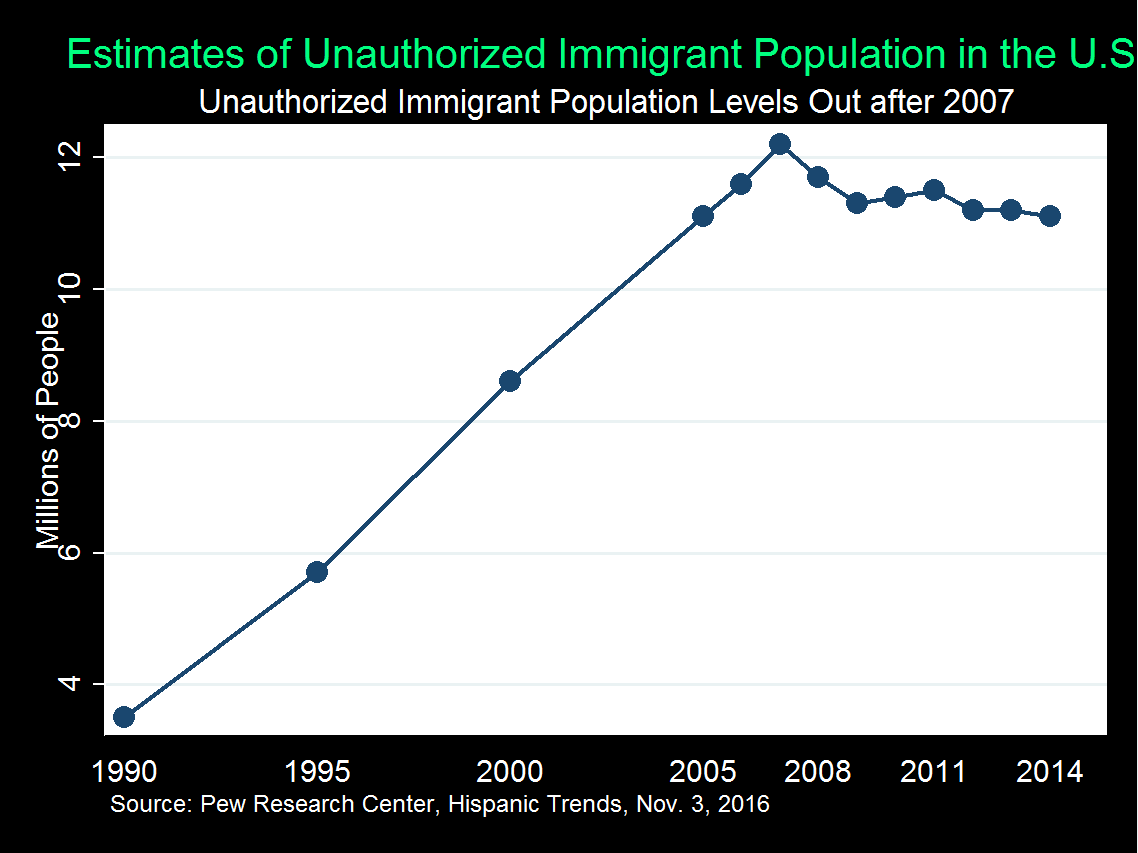Should the United States Build a Wall on the Mexican Border to Reduce Unauthorized Immigration?
Rutgers University

The Issue:
A centerpiece of Donald Trump's campaign was his pledge to “Build A Wall” across the United States – Mexican border to halt the flow of illegal immigrants into the United States.The Facts:
- The population of undocumented immigrants in the United States has not grown for a decade. In fact, a sharp drop in the number of unauthorized Mexican immigrants has caused the undocumented population to shrink from 12.2 million and stabilize at around 11.1 million by 2014, according to the Pew Research Center. While unauthorized immigrants are still coming in, they have been doing so in numbers that have been roughly equal to—or smaller than—the number who leave, are deported, obtain legal status, or die each year. This stands in sharp contrast with the rapid growth of the undocumented population in the 1990s and early 2000s (see chart).
- A large fraction of undocumented immigrants in the United States did not cross the border with Mexico illegally, but rather entered on a visa and did not leave when it expired. One study estimated that as many as 45% of the undocumented in 2005 were visa over-stayers. This share is likely to have risen since then as the numbers of undocumented Mexicans have fallen and immigrants from other countries are more likely to have overstayed a temporary visa. But exact and updated figures are not available because the U.S. does not have a system to track whether foreigners who arrive on temporary visas leave the country. Following the 1993 World Trade Center bombing and the September 11 attacks, Congress authorized several initiatives to track visa overstays but they have not been fully implemented.
- Fencing and barriers have already been built along the one third of the border identified by the Border Patrol as suitable for this, and large sums of money are currently devoted to patrolling the border. By 2015, there were 353 miles of pedestrian fencing and 300 miles of vehicle fencing. Between 1986 and 2015 the annual border patrol budget increased from $151 million to $3.8 billion, while the number of border patrol agents rose form 3,700 to 21,000. Additional spending would at best lead to small reductions in inflows. (See here for border security infrastructure and spending data.)
- Paradoxically, the increased border security may have increased the size of the undocumented Mexican population. The increasing difficulty of visiting Mexico caused some migrants to bring their families over and settle more permanently in the United States.
What this Means:
The main policy issue currently facing the United States with respect to undocumented immigrants is not reducing inflows of immigrants who will be undocumented, but what to do about the millions of undocumented immigrants already residing in the country. If additional measures to stop people from adding to the ranks of the undocumented are nevertheless to be implemented, a wall is probably not the best use of resources. Completing the tracking system legislated by Congress to monitor departures from the United States would make it more difficult for people to over-stay their visas. In addition, mandatory use of E-Verify, an existing electronic method for employers to check the visa status of their workers, would make it more difficult for newly-arrived unauthorized immigrants to find work. However, mandatory E-Verify would also have a large impact on undocumented immigrants already in the country.
